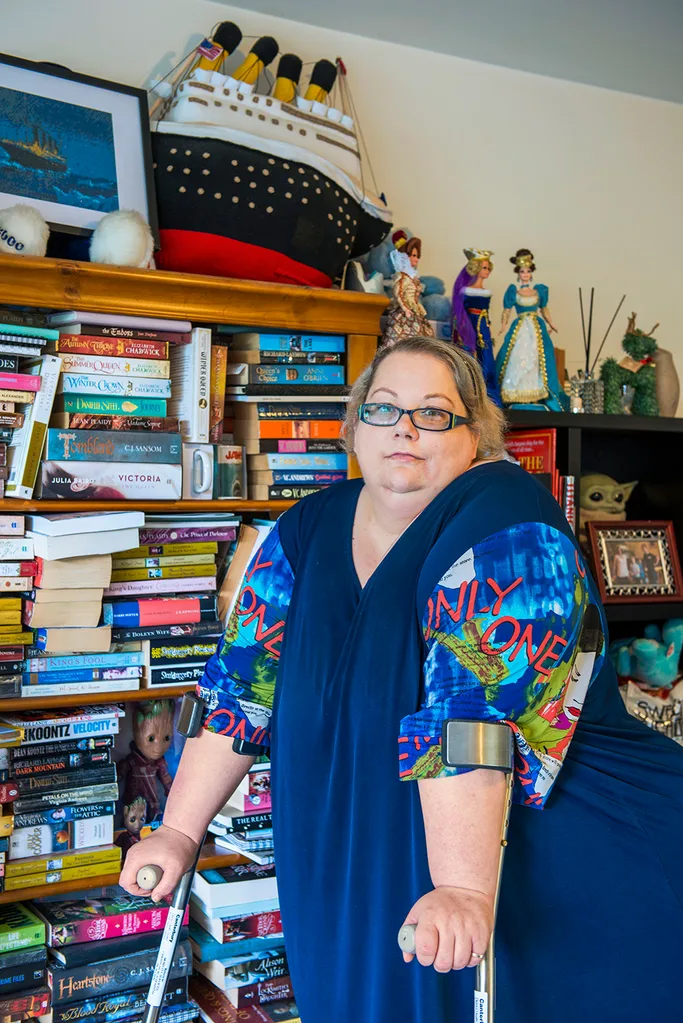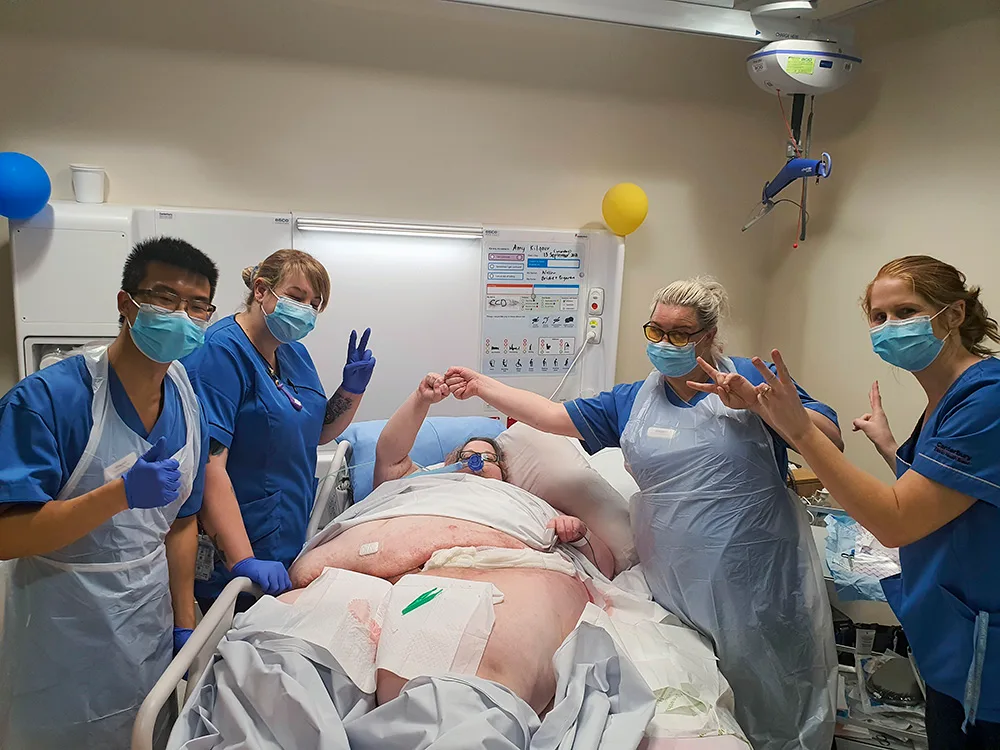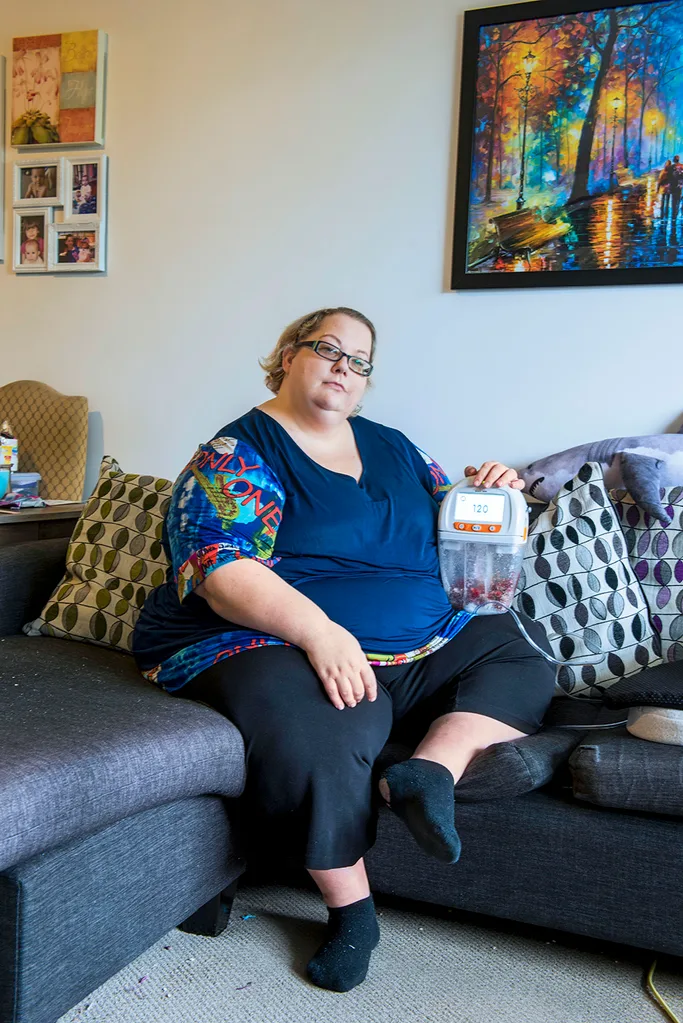When Amy Kilgour popped an ingrown hair near her groin one morning in August, the last thing she imagined was that it would cause her to catch a deadly flesh-eating disease.
But after being diagnosed with necrotising fasciitis, a serious bacterial infection, the Christchurch local is recovering from 10 life-saving surgeries that cut away 10 kilos of destroyed flesh.
“The doctors said I would’ve died if I’d left it one more day before going to hospital,” says Amy, 38, who has been back at home for three weeks.
“The ingrown hair burst under my skin on a Saturday morning, and a day later it was a bit red and bruised, but I figured I just pressed it too hard. A day after that, I couldn’t even stand up straight because I was in so much agony.”
Amy’s pain was so bad, she didn’t notice she hadn’t urinated in 24 hours, despite drinking large amounts of water. After reporting a “burning pressure” sensation, her quick-thinking GP instructed her to immediately go to hospital.

Amy faces more surgery to even up her lopsided stomach.
“I said I’d book an Uber but was really going to return home to bed because I was exhausted,” admits the former nightshift security dispatch worker. “But my doctor booked me one anyway, which I’m now really grateful for! Necrotising fasciitis can get into the body through the tiniest scratch and once it’s in, it spreads so fast.”
Doctors at Christchurch Hospital ordered blood tests and found the C-reactive protein (CRP) in Amy’s blood, which measures inflammation or infection in the body, was high and climbing. An ultrasound showed an abscess about 12cm-long near the infected ingrown hair site.
“The doctor told me if I had a burst appendix, the CRP in my system would be at a level of about 150 and mine was 480,” recalls Amy.
Given antibiotics to help curb the infection, she had her first surgery two hours later. “I didn’t have time to feel scared because I was in so much pain,” she tells. “I didn’t care what they did.”
Surgeons removed just over a cup of pus during the initial procedure, but because Amy’s CRP levels and temperature remained high post-surgery, they went back in and found more infected tissue. By the 10th procedure, Amy had a 45cm-long surgery wound on the left side of her body.

Her wound was 45cm-long and 20cm-deep.
“It was like my insides were dying and liquifying because necrotising fasciitis turns your flesh to sludge,” explains Amy, who almost lost her bowel to the disease. “Doctors warned me they had to keep cutting even if it meant taking my bowel because if they didn’t, I’d die. Luckily they managed to get on top of it!”
To prepare for her recovery, Amy’s 20cm-deep wound was packed with foam. Doctors don’t yet know if she’ll need skin grafts and have told her it will take until early next year for her to fully heal.
“My body is kind of lop-sided now. The doctor said he’d be happy to even it out, but not until well after I’m healed because my body can only take so much.”
Now recovering at home, she is still visited by a nurse twice a week to change her dressings.

A Vac machine sucks gunk from her wound.
“They clean the open wound and repack it with new gauze, before reattaching a Vac machine that sucks out the bad gunk and collects it in a canister. One part of the wound is still 12cm deep.”
Amy admits it’s hard to process the fact she almost died. “This was my first time in hospital staying overnight and I was super out of it on drugs, and sad because I was in so much pain,” she shares.
“No one could come see me for the first few weeks because of lockdown. But the nurses were fantastic and so supportive. If I was crying, they’d take some time to sit and talk with me. Once, I was having a really bad night and one of them tucked me in and gave me a hug.”
It was the nurses who suggested Amy share her story as she says Christchurch Hospital sees two or three people a year with necrotising fasciitis.
“It’s important,” says Amy. “I want people to know that it’s out there, floating around and that it can strike.”
.jpg?resize=720%2C405) Juliet Nicholas
Juliet Nicholas

